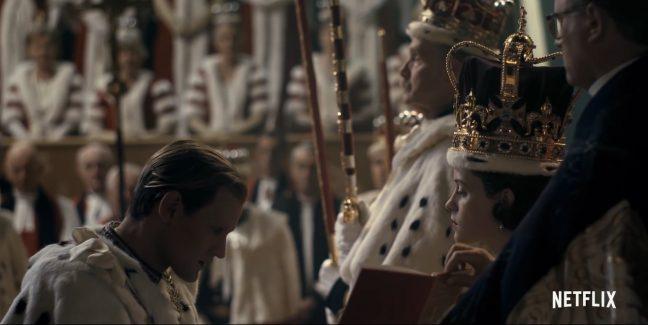With its sumptuous imagery, detailed performances and historical accuracy, Netflix’s “The Crown” successfully shines a humanizing light onto the Royal Family and the British Monarchy with Queen Elizabeth II at its all-encompassing center.
Rumored to have cost £100 million, making it the most expensive television series in history, the 10-episode Netflix original details the lives of the Windsor family and Queen Elizabeth’s rise to power and subsequent reign.
The creator, Peter Morgan, is also the writer of the 2006 film, “The Queen,” as well as the 2013 stage play, “The Audience,” both of which are windows into the lives of Britain’s infamous family. His knowledge of the monarchy most definitely bleeds into “The Crown,” where each character is handled with careful consideration and presented as eloquently as the real-life Royals themselves.
In the opening scene, the viewer is immediately drawn in as King George IV, played by Jared Harris, is seen coughing up blood into the “loo,” as the Brits would say. The harrowing moment foreshadows the king’s eventual, early demise due to cancer, prompting his daughter to unexpectedly take his place at the age of 25.
The queen, played brilliantly by Claire Foy, is thrust into the spotlight after only recently marrying her husband Philip, Duke of Edinburgh, and having their children, Charles and Anne.
The show chronicles the Windsor family from 1947 to 1956, exploring both the historical events happening during the time period, such as Winston Churchill’s reelection and the intricacies of the complicated lives led by the Royal Family.
The cast’s performances are unbelievably exquisite, and the sets are embellished with detail and every bit of elegance expected from such a costly production value. The plot is carefully constructed as it aims to not only offer valuable insight into royal affairs, but to also move through time in a seamless, logical way.
Yet, the queen herself does not seem to have much of a say. In an attempt to wholly represent the entire Royal Family, Foy’s performance is undermined. Though she is the central character within the show, Queen Elizabeth II is not personified in a way that allows the audience to truly understand, and sympathize, with her inner dialogue.
The subtleties of her character are finely exhibited, with her looks of worry, hesitancy and inner-conflict at the core of Foy’s performance. But, more scenes of her grappling with her circumstances would’ve offered transparency into the messy life of a young, ruling queen.
Hopefully, the second season will allow Foy’s portrayal of the queen to blossom in a way that felt sheltered in the first. Her potential to bring this character to life and fill it with beauty, grace and intellectual mindfulness is undoubtedly present. As the queen continues to come into her own as ruler, the upcoming seasons should offer Foy the opportunity to shine a more glaring light on a previously shadowed monarch.
While there are qualms to be had, “The Crown” proves that a seemingly dry, overdone story can be just as worthwhile and intriguing as its Netflix original counterparts. This series is for anyone who craves an aesthetically pleasing, fine-tuned costume drama that highlights the regalness of a dignified, yet slightly disheveled family trying to rule an even more complicated mid-twentieth century Britain.


